Suggest a new Definition
Proposed definitions will be considered for inclusion in the Economictimes.com
Economy
- PREV DEFINITIONTender periodTender period gives members of the contract the flexibility to make decisions till the time the contract expires.Read More
- NEXT DEFINITIONTrade UnionLabour unions or trade unions are organizations formed by workers from related fields that work for the common interest of its members.Read More
What is 'Trade'
Trade
Long ago before the advent of money, do you wonder how people got their things? Well, they had a system in place called the barter system where if a person wants something but has another thing to give, he would find a person who has the item desired while requiring the item being offered.
Thus, this collective need is what leads a person to swap their items in hand to fulfill both of their requirements. This is considered an act of trade.
What is Trade?
In simple terms, trade is basically an exchange, voluntary in nature between two parties in requirement of each other’s resources i.e. goods and services.
This system is based purely on the concept of need, having a sort of symbiotic relationship in which both benefit each other. In financial terms, trade basically refers to the sale and purchase of assets and securities between two consensual sides.
Trade Definition
The definition of trade can be simplified in a single sentence, the fulfillment of desires by two individuals or groups via the swapping of their respective material goods and services.
Trade Importance
Trade is a practice going on for centuries with its own variations and techniques. With the old barter system as mentioned earlier, the trade saw the problem that not everyone had something of desire to give in place of obtaining something, so the solution to this problem was the creation of money, in other words, a common desirable item which can be traded in place of anything for a mutually decided monetary value.
And even money has seen its fair share of design changes, from precious metals to standardized coins to cash and now in form of the new cryptocurrency or digital currency.
Not only that, trade even provides some important benefits straight off the bat. The first one is the economic growth as trade leads to an exchange of cultures and opportunities leading to strives in development. Also, it puts remote locations on the map with global recognition for each place’s strengths along with its shortcomings leading to bustling civilizations followed by betterment.
Lastly, it even improves the performance of a country in financial aspects by giving job opportunities to people and taxes to the government which will drastically improve the country’s financial standings and incomes.
Types of Trade
Trade can be ascribed to two types:
Domestic Trade
This type of trade can further be classified into two types as well:
Wholesale Trade
This type of trade is carried on by a wholesaler who is basically the middle man between retailers and producers. The producer sells his products in hefty quantities to the wholesale trader and in turn, the wholesaler sells it to the retailer which goes on to be sold to customers. This trade is practiced widely in the majority of shops
Retail Trade
Now the retail trade is carried on by a retailer who is basically the middle man between wholesalers and customers. The wholesaler sells his products in hefty quantities to the retail trader and in turn, the retailer sells them to the customers for their use. This trade acts as the second link in the journey of a finished product from the producer to the customer.
Foreign Trade
This type of trade can be classified into two types as well:
Import Trade
This type of trade is basically the transportation of goods to one’s home country, in other words, being on the receiving end of the trade between two countries. These trades require the home country to pay for the goods.
Export Trade
This type of trade is basically the transportation of goods from one’s home country, in other words, being on the giving end of the trade between two countries. These trades require the home country to charge for the goods.
Trade Advantages
A few major advantages of trade are:
Trade Disadvantages
A few major disadvantages of trade are:
What is trade according to the dictionary?
The dictionary meaning of the word trade is the business involving selling and buying of items or goods and services.
What are the types of trade?
What are the examples of trade?
There are two major types of trade both of which have two subparts as well:
Disclaimer: This content is authored by an external agency. The views expressed here are that of the respective authors/ entities and do not represent the views of Economic Times (ET). ET does not guarantee, vouch for or endorse any of its contents nor is responsible for them in any manner whatsoever. Please take all steps necessary to ascertain that any information and content provided is correct, updated and verified. ET hereby disclaims any and all warranties, express or implied, relating to the report and any content therein.
Long ago before the advent of money, do you wonder how people got their things? Well, they had a system in place called the barter system where if a person wants something but has another thing to give, he would find a person who has the item desired while requiring the item being offered.
Thus, this collective need is what leads a person to swap their items in hand to fulfill both of their requirements. This is considered an act of trade.
What is Trade?
In simple terms, trade is basically an exchange, voluntary in nature between two parties in requirement of each other’s resources i.e. goods and services.
This system is based purely on the concept of need, having a sort of symbiotic relationship in which both benefit each other. In financial terms, trade basically refers to the sale and purchase of assets and securities between two consensual sides.
Trade Definition
The definition of trade can be simplified in a single sentence, the fulfillment of desires by two individuals or groups via the swapping of their respective material goods and services.
Trade Importance
Trade is a practice going on for centuries with its own variations and techniques. With the old barter system as mentioned earlier, the trade saw the problem that not everyone had something of desire to give in place of obtaining something, so the solution to this problem was the creation of money, in other words, a common desirable item which can be traded in place of anything for a mutually decided monetary value.
And even money has seen its fair share of design changes, from precious metals to standardized coins to cash and now in form of the new cryptocurrency or digital currency.
Not only that, trade even provides some important benefits straight off the bat. The first one is the economic growth as trade leads to an exchange of cultures and opportunities leading to strives in development. Also, it puts remote locations on the map with global recognition for each place’s strengths along with its shortcomings leading to bustling civilizations followed by betterment.
Lastly, it even improves the performance of a country in financial aspects by giving job opportunities to people and taxes to the government which will drastically improve the country’s financial standings and incomes.
Types of Trade
Trade can be ascribed to two types:
Domestic Trade
This type of trade can further be classified into two types as well:
Wholesale Trade
This type of trade is carried on by a wholesaler who is basically the middle man between retailers and producers. The producer sells his products in hefty quantities to the wholesale trader and in turn, the wholesaler sells it to the retailer which goes on to be sold to customers. This trade is practiced widely in the majority of shops
Retail Trade
Now the retail trade is carried on by a retailer who is basically the middle man between wholesalers and customers. The wholesaler sells his products in hefty quantities to the retail trader and in turn, the retailer sells them to the customers for their use. This trade acts as the second link in the journey of a finished product from the producer to the customer.
Foreign Trade
This type of trade can be classified into two types as well:
Import Trade
This type of trade is basically the transportation of goods to one’s home country, in other words, being on the receiving end of the trade between two countries. These trades require the home country to pay for the goods.
Export Trade
This type of trade is basically the transportation of goods from one’s home country, in other words, being on the giving end of the trade between two countries. These trades require the home country to charge for the goods.
Trade Advantages
A few major advantages of trade are:
- Efficiency Increase
- Natural Resources are Maximum Utilization
- Development of Sympathies and Common Interests among countries
- Development of Large-Scale Production
Trade Disadvantages
A few major disadvantages of trade are:
- Job Insecurity
- Developed Economy Dependence
- Monopoly creations
- Influence on Political Decisions
What is trade according to the dictionary?
The dictionary meaning of the word trade is the business involving selling and buying of items or goods and services.
What are the types of trade?
What are the examples of trade?
There are two major types of trade both of which have two subparts as well:
- Domestic trade
- Wholesale trade
- Retail trade
- Foreign trade
- Import trade
- Export trade
Disclaimer: This content is authored by an external agency. The views expressed here are that of the respective authors/ entities and do not represent the views of Economic Times (ET). ET does not guarantee, vouch for or endorse any of its contents nor is responsible for them in any manner whatsoever. Please take all steps necessary to ascertain that any information and content provided is correct, updated and verified. ET hereby disclaims any and all warranties, express or implied, relating to the report and any content therein.
- PREV DEFINITIONTender periodTender period gives members of the contract the flexibility to make decisions till the time the contract expires.Read More
- NEXT DEFINITIONTrade UnionLabour unions or trade unions are organizations formed by workers from related fields that work for the common interest of its members.Read More
Related News
 China's Xi calls for 'bridges' amid trade, diplomatic frictionsChinese President Xi Jinping has called for the building of "bridges" in the global economy as Beijing grapples with economic, trade, and territorial disputes with neighbours and trading partners. He emphasized that the world's second-largest economy will never leave the road of peaceful development and will not become a "strong" state seeking to dominate others.
China's Xi calls for 'bridges' amid trade, diplomatic frictionsChinese President Xi Jinping has called for the building of "bridges" in the global economy as Beijing grapples with economic, trade, and territorial disputes with neighbours and trading partners. He emphasized that the world's second-largest economy will never leave the road of peaceful development and will not become a "strong" state seeking to dominate others.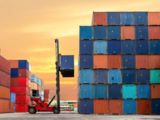 Interest equalisation scheme for exporters extended for 2 months; FIEO disappointedThe scheme helps exporters from identified sectors and all MSME manufacturer exporters to avail of rupee export credit at competitive rates at a time when the global economy is facing headwinds. Exporters get subsidies under the Interest Equalisation Scheme for pre and post-shipment rupee export credit.
Interest equalisation scheme for exporters extended for 2 months; FIEO disappointedThe scheme helps exporters from identified sectors and all MSME manufacturer exporters to avail of rupee export credit at competitive rates at a time when the global economy is facing headwinds. Exporters get subsidies under the Interest Equalisation Scheme for pre and post-shipment rupee export credit.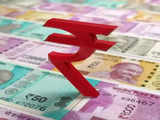 Rupee rises 8 paise to 83.37 against US dollar in early tradeMarket anticipates US inflation data, oil supply issues from Russia and the Middle East drive prices. The rupee strengthens against the dollar amidst market optimism and increased foreign investments.
Rupee rises 8 paise to 83.37 against US dollar in early tradeMarket anticipates US inflation data, oil supply issues from Russia and the Middle East drive prices. The rupee strengthens against the dollar amidst market optimism and increased foreign investments. India imposes anti-dumping duties on three Chinese productsOn hydraulic rock breakers, the duty ranged between 4.55 per cent and 162.5 per cent of CIF (cost, insurance, freight) value in US dollars. The duty was also imposed on these goods coming from Korea. These breakers are used in the construction and mining industry for carrying out demolition, excavation, mining and boulder breaking activities.
India imposes anti-dumping duties on three Chinese productsOn hydraulic rock breakers, the duty ranged between 4.55 per cent and 162.5 per cent of CIF (cost, insurance, freight) value in US dollars. The duty was also imposed on these goods coming from Korea. These breakers are used in the construction and mining industry for carrying out demolition, excavation, mining and boulder breaking activities.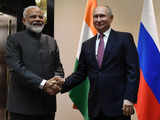 The train from Russia: How a new route can change things for IndiaA multimodal route that includes a railway, roadway network and seaports, the INSTC spans 7,200km (4,500 miles) from St. Petersburg to the port of Mumbai in India. The corridor is part of Russia’s push to find new transport routes in light of Western sanctions, which have forced it to shift trade flows from Europe to Asia and the Middle East.
The train from Russia: How a new route can change things for IndiaA multimodal route that includes a railway, roadway network and seaports, the INSTC spans 7,200km (4,500 miles) from St. Petersburg to the port of Mumbai in India. The corridor is part of Russia’s push to find new transport routes in light of Western sanctions, which have forced it to shift trade flows from Europe to Asia and the Middle East.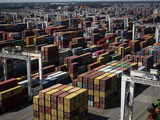 "It's all happening again": The supply chain is under strainThe intensifying upheaval in shipping is prompting carriers to lift rates while raising the specter of waterborne gridlock that could again threaten retailers with product shortages during the make-or-break holiday shopping season. The disruption could also exacerbate inflation, a source of economic anxiety animating the U.S. presidential election.
"It's all happening again": The supply chain is under strainThe intensifying upheaval in shipping is prompting carriers to lift rates while raising the specter of waterborne gridlock that could again threaten retailers with product shortages during the make-or-break holiday shopping season. The disruption could also exacerbate inflation, a source of economic anxiety animating the U.S. presidential election.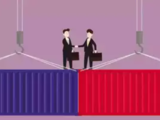 Commerce min engaging with different departments on India, Korea FTA upgrade talks: OfficialIndia and Korea are progressing with talks to upgrade their existing free trade agreement (FTA), known as the Comprehensive Economic Partnership Agreement (CEPA). The Department of Commerce is collaborating with various ministries such as heavy industries, steel, and chemicals to prepare the offer list for the negotiations.
Commerce min engaging with different departments on India, Korea FTA upgrade talks: OfficialIndia and Korea are progressing with talks to upgrade their existing free trade agreement (FTA), known as the Comprehensive Economic Partnership Agreement (CEPA). The Department of Commerce is collaborating with various ministries such as heavy industries, steel, and chemicals to prepare the offer list for the negotiations. LEDs... and ACtion: White goods PLI may see light of day, againThe government is considering reopening the Production-Linked Incentive Scheme for White Goods (PLIWG) to boost domestic manufacturing of high-value components like compressors, copper tubes, and aluminium foils. The Department for Promotion of Industry and Internal Trade (DPIIT) is reaching out to industry players to gauge their interest in investing in the scheme, which aims to increase production of air-conditioner and LED light components.
LEDs... and ACtion: White goods PLI may see light of day, againThe government is considering reopening the Production-Linked Incentive Scheme for White Goods (PLIWG) to boost domestic manufacturing of high-value components like compressors, copper tubes, and aluminium foils. The Department for Promotion of Industry and Internal Trade (DPIIT) is reaching out to industry players to gauge their interest in investing in the scheme, which aims to increase production of air-conditioner and LED light components.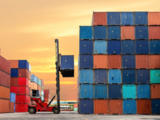 DGFT implements automated system for adhoc input-output norms fixationThe Directorate General of Foreign Trade (DGFT) has introduced a new automated system to establish adhoc input-output norms, aimed at facilitating foreign trade procedures. This initiative allows exporters to import duty-free raw materials for manufacturing goods meant for export under advance authorisation. Exporters can now apply for customized adhoc norms through a rule-based, automated process if standard norms do not meet their specific requirements.
DGFT implements automated system for adhoc input-output norms fixationThe Directorate General of Foreign Trade (DGFT) has introduced a new automated system to establish adhoc input-output norms, aimed at facilitating foreign trade procedures. This initiative allows exporters to import duty-free raw materials for manufacturing goods meant for export under advance authorisation. Exporters can now apply for customized adhoc norms through a rule-based, automated process if standard norms do not meet their specific requirements. India, Cambodia discuss investment treaty, UPI collaborationIndia and Cambodia are in talks to collaborate on UPI-based digital payments to boost trade and tourism, according to the Indian commerce ministry. The discussions, held on Wednesday, also focused on diversifying the trade basket with new products, establishing a bilateral investment treaty, recognizing Indian pharmacopoeia, and collaborating in the pharmaceutical sector.
India, Cambodia discuss investment treaty, UPI collaborationIndia and Cambodia are in talks to collaborate on UPI-based digital payments to boost trade and tourism, according to the Indian commerce ministry. The discussions, held on Wednesday, also focused on diversifying the trade basket with new products, establishing a bilateral investment treaty, recognizing Indian pharmacopoeia, and collaborating in the pharmaceutical sector.
Load More